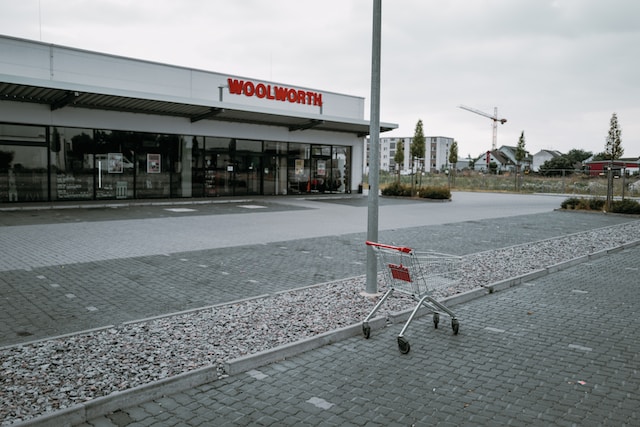Before we dive deep into the SWOT analysis, let us get the business overview of Woolworths. Woolworths Group Limited is a leading Australian retail company with a diverse business portfolio, primarily focusing on supermarkets and grocery stores. Established in 1924, Woolworths has grown to become one of the largest retail chains in Australia and New Zealand, with a strong presence in both countries.
Key aspects of Woolworths Group’s business include:
- Supermarkets: Woolworths operates a vast network of supermarkets under the Woolworths brand in Australia and the Countdown brand in New Zealand. These supermarkets offer a wide range of products, including fresh produce, meat, dairy, bakery, household items, and general merchandise. Woolworths is committed to providing customers with quality products at competitive prices, emphasizing Australian-made and locally sourced products.
- Liquor retailing: Woolworths Group owns and operates several liquor retail brands, such as Dan Murphy’s, BWS (Beer, Wine, and Spirits), and Cellarmasters. These stores offer a broad selection of alcoholic beverages, including beer, wine, spirits, and other related products.
- Hotels and Gaming: The Group operates several hotels and gaming venues across Australia through its Australian Leisure and Hospitality Group (ALH Group) subsidiary. This division offers food, beverage, accommodation, entertainment services, and gaming facilities.
- Petrol and Convenience: Woolworths has a presence in the petrol and convenience retailing sector, focusing on providing fuel, convenience items, and food-to-go options for customers on the move.
- Online retail: Woolworths Group has a strong online presence, allowing customers to shop for groceries and other products through its websites and mobile apps. The company has invested significantly in its digital capabilities to provide customers with a seamless and convenient shopping experience.
- Supply chain and logistics: Woolworths Group operates an extensive supply chain network, including distribution centers and transport systems, to ensure the efficient delivery of products to its stores and online customers.
Financial Performance: Woolworths generated $60.8 billion in sales in FY22, with an EBIT of $2.7 billion.
Here is a SWOT analysis for Woolworths:
A SWOT analysis is a strategic planning tool used to evaluate the Strengths, Weaknesses, Opportunities, and Threats of a business, project, or individual. It involves identifying the internal and external factors that can affect a venture’s success or failure and analyzing them to develop a strategic plan. In this article, we do a SWOT Analysis of Woolworths.
SWOT Analysis: Meaning, Importance, and Examples
Strengths
- Market leadership: Woolworths is one of Australia’s largest supermarket and retail chains, with a significant market share (36%). This market leadership gives the company strong brand recognition, customer loyalty, and economies of scale.
- Diverse product offerings: Woolworths offers a wide range of products across various categories, including fresh produce, meat, dairy, bakery, household items, and general merchandise. This diversity allows the company to cater to a broad customer base and meet their varying needs.
- Strong supply chain and logistics network: Woolworths Group operates an extensive supply chain network, including distribution centers and transport systems, to ensure the efficient delivery of products to its stores and online customers. This helps the company maintain a competitive advantage regarding product availability and pricing.
- Digital capabilities: Woolworths has invested heavily in its online presence, with user-friendly websites and mobile apps that enable customers to shop conveniently from their homes or on the go. This focus on digital solutions has helped the company stay ahead of the competition and cater to the increasing demand for online shopping.
- Focus on customer experience: Woolworths emphasizes providing high customer service and a positive shopping experience. The company invests in staff training and store layouts to ensure a pleasant and efficient shopping environment.
- Private label products: Woolworths offers a range of high-quality private label products, which provide customers with value-for-money options and generate higher profit margins for the company.
- Sustainability and corporate social responsibility: Woolworths is committed to various sustainability initiatives and CSR programs, focusing on reducing waste, responsible sourcing, and supporting local communities. This commitment enhances the company’s reputation and strengthens its relationship with customers.
- Strategic partnerships: Woolworths has formed various collaborations and alliances with suppliers, service providers, and other retail operators to strengthen its market position and create value for its customers.
Weaknesses
- Dependence on the Australian and New Zealand markets: Woolworths primarily operates in Australia and New Zealand, making it susceptible to economic fluctuations and market conditions in these two countries. Diversifying its operations into other international markets could mitigate this risk.
- Limited international presence: Woolworths has a relatively small global footprint, unlike some competitors. Expanding its operations to other countries could provide new growth opportunities and help reduce the company’s reliance on its core markets.
- Competition and price wars: Woolworths faces intense competition from other supermarket chains, such as Coles and ALDI, which can lead to price wars and pressure on profit margins. The company must continuously innovate and adapt its pricing strategies to stay ahead of the competition.
- Challenges in online retail: While Woolworths has significantly invested in its digital capabilities, the company still faces challenges in the rapidly evolving online retail space. Competing with e-commerce giants and adapting to changing consumer preferences are ongoing challenges for the company.
- Impact of changing regulations: Woolworths operates in a highly regulated industry, and changes in government policies and regulations can directly impact its business. The company must stay abreast of regulatory changes and adapt its operations accordingly.
- Labor relations and workforce management: Managing a large workforce across various locations can be challenging, and labor disputes or unrest can disrupt operations and negatively impact the company’s reputation.
Opportunities
- International expansion: Woolworths can explore opportunities for growth in international markets, which would help diversify its revenue sources and reduce its dependence on the Australian and New Zealand markets.
- Strengthening e-commerce presence: Woolworths can further enhance its digital capabilities and e-commerce platform to capitalize on the growing trend of online shopping. This could include improving website and app functionality, expanding product offerings, and investing in advanced technologies such as artificial intelligence and machine learning to improve customer experience.
- Expansion into new retail segments: Woolworths can consider diversifying its business by entering new retail segments, such as health and wellness, specialty food markets, or technology products, which could offer additional revenue streams and growth opportunities.
- Partnerships and acquisitions: Woolworths can explore strategic alliances, mergers, or acquisitions to expand its product offerings, improve supply chain efficiency, and access new technologies or markets. This could help the company maintain a competitive edge in the industry.
- Focus on sustainability and social responsibility: By investing in sustainable practices and increasing its commitment to social responsibility initiatives, Woolworths can enhance its brand reputation and appeal to environmentally-conscious and socially-aware customers.
- Enhancing private label offerings: Woolworths can further develop its private label products, focusing on quality, innovation, and value for money.
Threats
- Intense competition: Woolworths faces fierce competition from other supermarket chains such as Coles, ALDI, and independent retailers. This competition can lead to price wars, margin pressures, and loss of market share, which can impact the company’s profitability and growth.
- Changing consumer preferences: Consumer preferences are constantly evolving, with a growing demand for healthier food options, sustainable products, and online shopping experiences. Woolworths must adapt to these changing preferences to stay relevant and maintain customer loyalty.
- Economic downturns and market fluctuations: Economic downturns or fluctuations in the Australian and New Zealand markets could negatively impact consumer spending and reduce sales and profitability for Woolworths.
- Regulatory changes and compliance: Woolworths operates in a highly regulated industry, and changes in government policies or regulations can directly impact its business. The company must stay abreast of regulatory changes and adapt its operations accordingly to ensure compliance and mitigate risks.
- Supply chain disruptions: Woolworths relies on an extensive supply chain network to source and deliver products to its stores. Disturbances in the supply chain caused by natural disasters, geopolitical tensions, or supplier issues can lead to product shortages and negatively impact the company’s operations.









